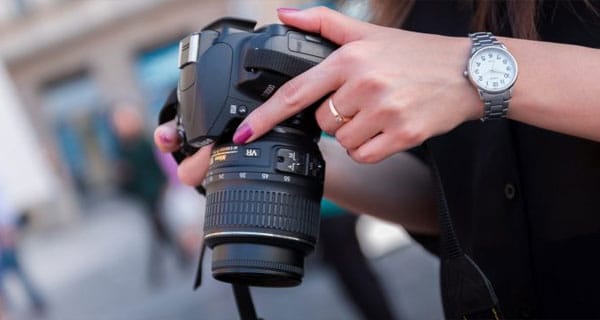
Used under a Creative Commons Licence
Photography without Permission: Is it Always Legal to Snap?
Many people believe that photographing people without their knowledge or consent is an invasion of privacy and therefore against the law. However, you might be surprised to learn that leaving aside the moral issues that this might raise, in Australia photography without permission it is (on the face of it) perfectly legal. This issue has become particularly important in light of an increasing trend in the use of images of ‘real people’ by ad agencies and stock libraries. Of course, the increasing use of micro camera technology in public places has also made this a hot topic.

Photography without permission, is it illegal?
There is no such thing as a distinct right of privacy in Australia (existing privacy legislation is primarily concerned with the privacy of information held by the public and private sector).
To add to this, unauthorised photography is not in itself prohibited.
There are however other legal restrictions that might prevent you from snapping someone else’s image freely and using it without their permission.
It all comes down to factors such as who you snap, where you snap, under what conditions you snap and whether the individual has a well known reputation or not.
These issues are very briefly explored here.
Defamation
The law of defamation might apply if the unauthorised use of the image of the person taken would lower the public’s estimation of that person, expose the person to hatred, contempt or ridicule, or cause the person to be shunned or avoided.
Some years ago, for example, a well-known rugby league player, mounted a successful defamation case against a magazine publisher when it published a photograph of him in the nude without his permission.
The court found that the photograph led him to be ridiculed because it showed his genitals to readers of a magazine with a widespread readership and thereby lowering the public’s estimation of him. The court took the view that the publication of his image was defamatory.
Capturing the rich and famous
Australian law gives special protection in regard to photography without permission to celebrities with a reputation, particularly if a person is well known by the public as an endorser of products. The theory is that they should be entitled to licence fees for the use of their image and this is based on the fact that people generally expect that celebrities have been paid to endorse products or services.
The context in which the photo has been taken can be very important. Compare for example, taking a photo of Australian cricketer, Shane Warne, in his backyard drinking a beer that is later published in an article in a newspaper about Shane Warne to a situation in which a beer company uses a cropped version of that very same photo for an ad campaign for beer.
The first use may be perfectly acceptable if the photo was taken legally and Shane Warne agreed to the photo being taken. The second example however, indicates that unauthorised commercial use is being made of Shane Warne’s image and reputation without compensation to him and is therefore prohibited.
What about children?
While these issues can affect us all when we are out and about, one particular concern is the rules around taking photographs of children in public.
For example, can you take photos at a local sporting event or playground if there are children around? Some people may think that it is against the law to take photos of children at events, but this is not the case – the rules apply just the same. Often schools and sporting clubs will have their own rules and policies in relation to photography without permission so you will need to check with the school or organisation as to whether they have a photography or social media policy.
With people snapping away and sharing photos like never before, there are concerns about the increased risk to photos children being exploited for sexual and/or commercial purposes. Even if it Is not the person who is taking the photos that is doing the exploiting, once it is on the internet, how do we control who shares and uses it?
Accordingly, there are strong calls to reform the current laws to provide better protection for children. However, this needs to be balanced with the need to not restrict parents, family and friends from being able to capture these moments of their children growing up.
Copyright and confidentiality
Copyright law plays a very limited role in preventing unauthorised use of a person’s image. This is because copyright law aims to protect the photograph itself as an artistic work, rather than the person whose photograph has been taken. The person, who owns the copyright in a photograph, can for example, prevent the unauthorised use and reproduction of it, but the person who has been photographed may not have any legal recourse in their own right (unless the photograph was taken pursuant to some agreement stating otherwise or under confidential circumstances or is defamatory).

Conclusion
The above discussion is a very brief and nonexhaustive introduction to photography without permission and the state of the law in this area which is actually very complex. As the legal position may change depending on the facts and context, it is highly recommended to seek specific legal advice for your circumstances.
For more information or for legal assistance in this kind of matter contact Sharon Givoni Consulting.
Please note the above article is general in nature and does not constitute legal advice.
Please email us info@iplegal.com.au if you need legal advice about your brand or another legal matter in this area generally.


